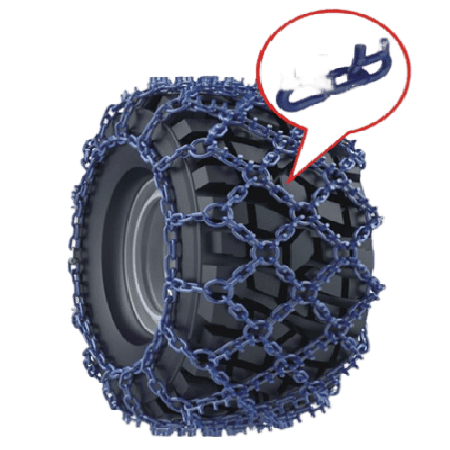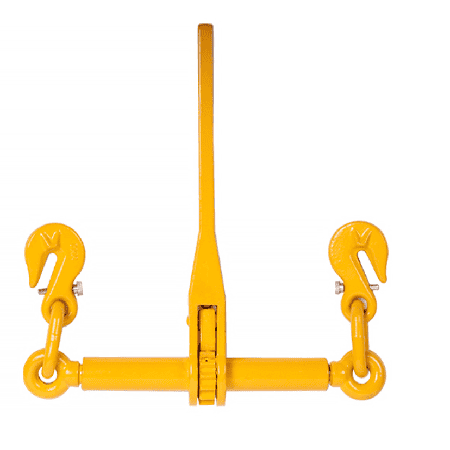Towing Strap Guide: Choose, Use & Maintain
A must-have for off-roaders and daily drivers alike, a towing strap helps safely recover stuck vehicles or tow others without damage. In this guide, we’ll walk you through how to choose the right towing strap, best practices for use, and key maintenance tips to keep it in top condition. Additionally, we’ll highlight some common mistakes to avoid, ensuring you can rely on your towing strap when you need it the most.
What Is a Towing Strap?
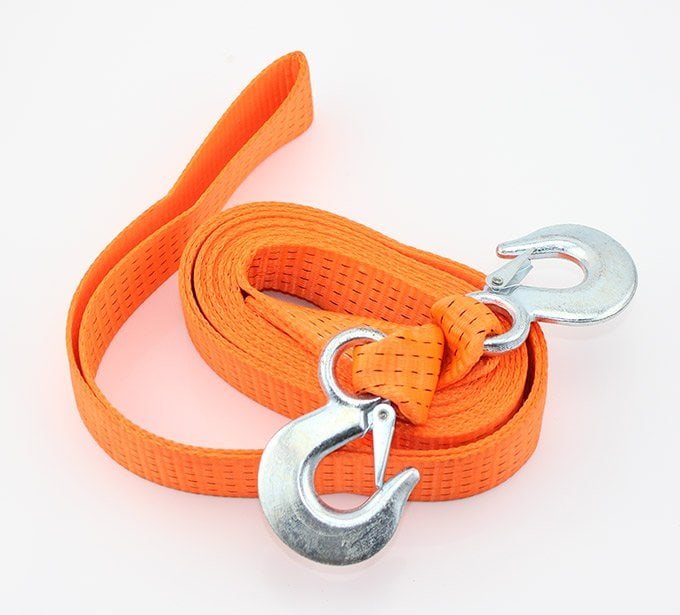
A towing strap, also known as a tow strap, is a strong, flexible webbing used to pull a vehicle that is stuck or broken down. Towing straps are essential for off-road enthusiasts, car owners in remote areas, and anyone who wants peace of mind during road trips.
There are two main types of straps used for recovery:
Hooks: Easy to connect but may slip if not secured correctly.
Looped ends: Safer for heavy-duty recovery with shackles or D-rings.
Towing Strap Parameter Table
| Item | Description |
| Material | Polyester |
| Width | 2″(50mm),3″(75mm),4″(100mm) |
| Length | 3m, 4m, 5m, 6m, 8m, 10m, or customized |
| WLL | 1500lbs-13,000lbs |
| Break Strength | 5000lbs-40,000lbs |
| End Fitting | S hook, loop, D ring, no fitting |
How to Choose the Right Towing Strap?
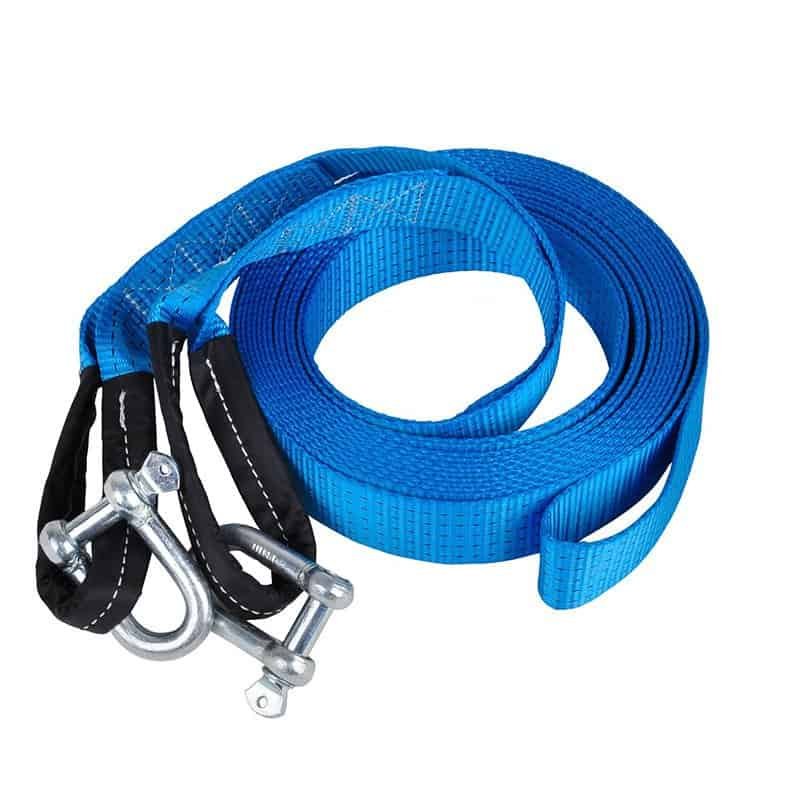
A good towing strap can mean the difference between a quick recovery and a dangerous failure. Here’s what to consider when picking one:
Weight Capacity
- Check your vehicle’s weight
- Choose a strap with a working load limit (WLL) at least 2-3x your vehicle’s weight (e.g., a 6,000-lb SUV needs a 12,000–18,000-lb strap).
Length & Width
- 20–30 ft is ideal for most recoveries.
- 2–4 inches wide for better strength and load distribution.
How to Use a Towing Strap Safely?
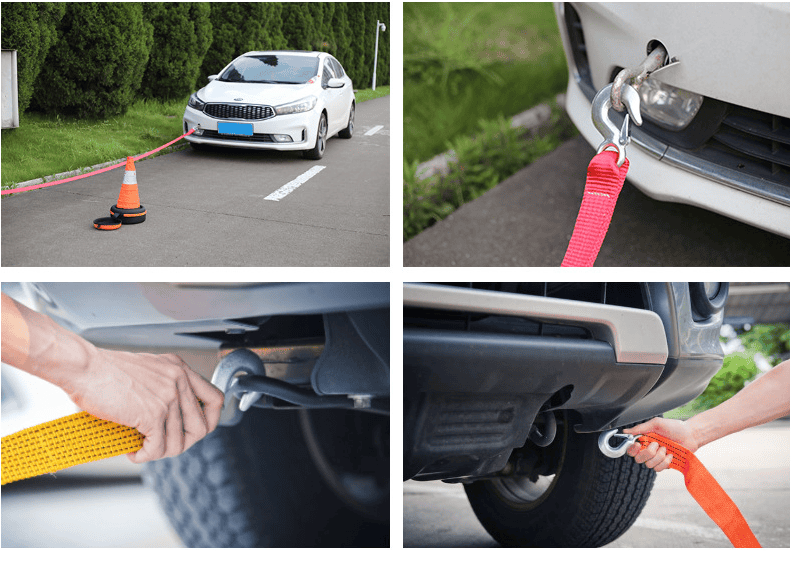
Locate Recovery Points
Use factory-installed tow hooks or recovery eyes on both vehicles. Never attach to bumpers or suspension components.
Connect the Strap
Use proper shackles or hooks. Lay the strap flat, untwisted.
Add a Safety Flag
Tie a cloth or recovery flag at the center to reduce recoil if the strap breaks.
Towing Process
- In static towing: The tow car should accelerate slowly.
- In recovery towing: The pulling vehicle builds momentum to “snap” the stuck car out.
Common Mistakes to Avoid
- Attaching to a trailer ball or bumper (extremely dangerous).
- Using a recovery strap like a regular tow strap (too much force).
- Ignoring damaged or frayed straps.
- Standing near the strap during recovery—always stay clear.
Maintenance & Storage Tips
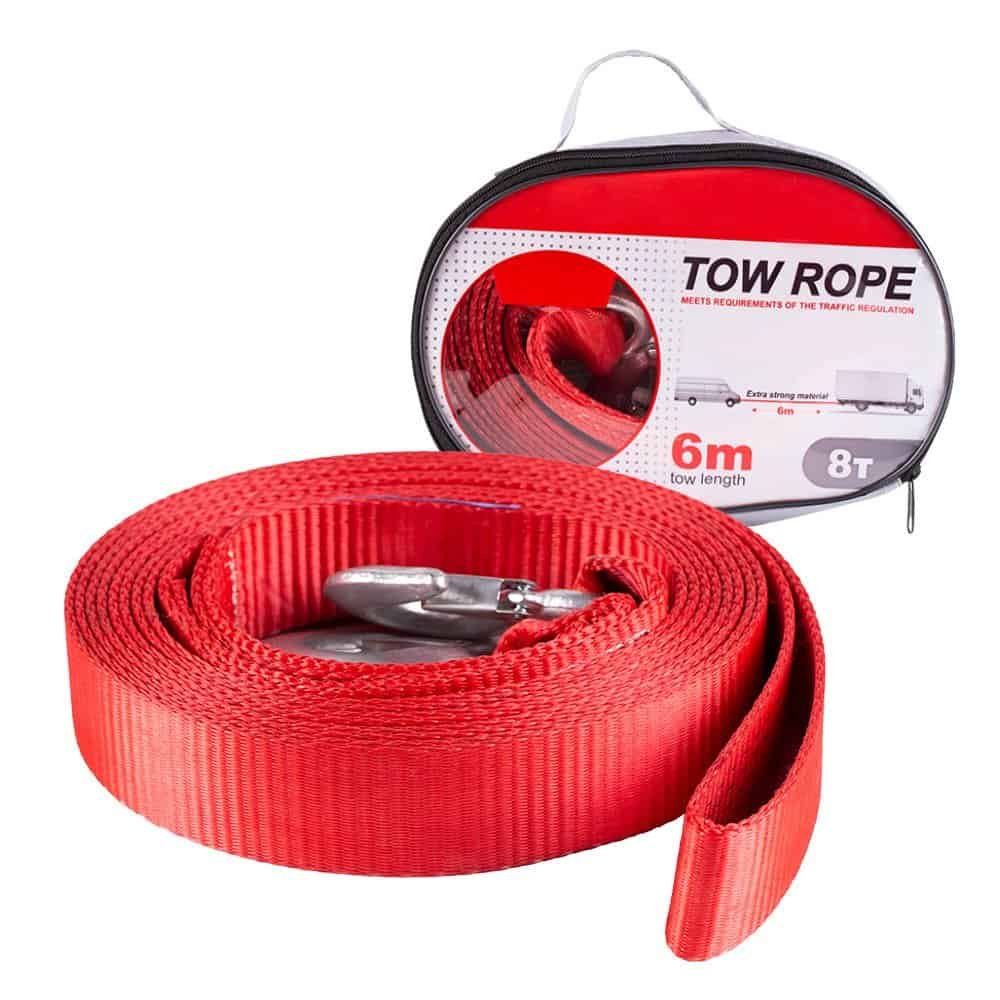
- Clean After Use: Rinse off mud, sand, or saltwater with mild soap.
- Dry Properly: Hang to air-dry; never store damp.
- Inspect Regularly: Look for fraying, cuts, or rusted hardware.
- Store in a Dry Bag: Keep the strap coiled neatly in a cool, dry location.
Conclusion
A towing strap is a simple yet powerful tool that every driver should have in their emergency kit. By choosing the right strap, using it safely, and maintaining it properly, you can ensure its reliability whenever you need it most.

